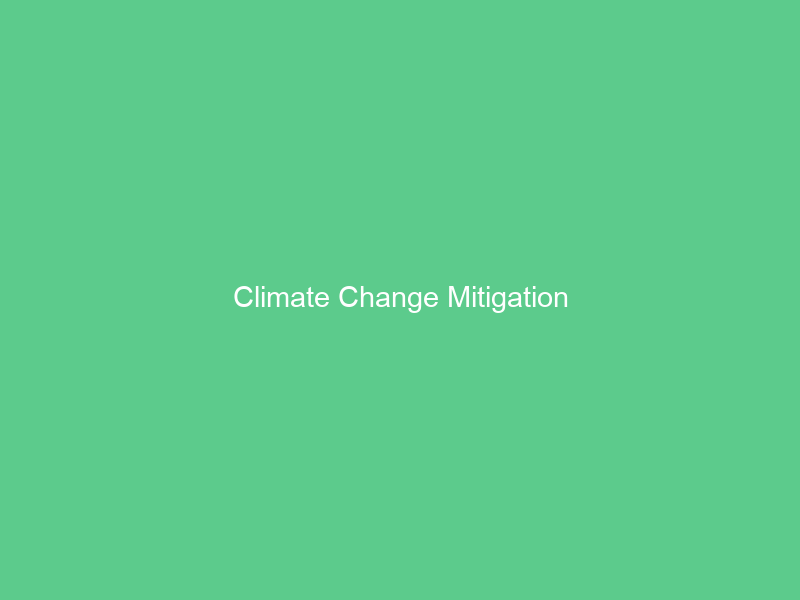Climate change mitigation includes taking steps to lower heat-trapping greenhouse gas emissions and expand carbon sinks, including everything from installing renewable energy systems to making our vehicles more fuel efficient. Shifting consumer habits may also play a part in mitigating climate change.
Encourage people to walk or cycle instead of driving can significantly lower traffic injuries and air pollution levels, while protecting natural areas like forests, wetlands and native prairies reduce deforestation and carbon emissions.
Biological carbon sequestration
Carbon sequestration refers to a process that removes carbon dioxide from the atmosphere and converts it to forms that cannot cause global warming, offering one promising way of combatting human-caused climate change when combined with other measures like energy efficiency and renewables.
Biosphere carbon sequestration has long played an essential role in maintaining atmospheric CO2 levels by sequestering carbon through photosynthesis; however, recent anthropogenic greenhouse gas emissions have outshone this method of atmospheric regulation.
Restoration and protection of forest and peatlands, reduction of food waste and adopting more sustainable diets could all significantly enhance rates and long-term durability of biological carbon uptake. Furthermore, these strategies could be implemented at lower costs than alternative measures, and easily integrated with others such as new energy technologies development incentives schemes or investments that apply across sectors of economic activity.
Adaptation
As our climate shifts, adaptation measures have become ever-more crucial to reduce risk and vulnerability. These efforts include large-scale interventions such as building defences against sea level rise and shifting development patterns out of inundation zones; improving early warning systems for flooding, heatwaves or storms; adapting agricultural practices to suit new weather conditions like longer growing seasons and drier soils, favoring drought-tolerant crops while conserving natural areas that act as carbon sinks.
Adaptation involves policy and behavior change, such as switching to more energy-efficient appliances or moving homes out of flood-prone zones. It may also involve reconfiguring existing infrastructure – for instance converting coastal flood defences into wetlands to buffer hurricanes – or using local solutions like planting native species of trees and shrubs in dry areas to increase biodiversity.
Demand-side mitigation
Energy efficient appliances, electric cars and other technology help mitigate climate change emissions; however, much of its mitigation requires changing people’s behavior and habits; such as driving or flying shorter distances, using less energy at home and work, eating plant-based diets and cutting food waste. Demand side solutions tend to be cheaper and more effective than supply side technologies (OECD 2019a).
Demand-side mitigation seeks to lower greenhouse gas emissions in order to avoid global warming, as well as human interference with Earth’s natural systems. Attaining this can be achieved by decreasing sources of heat-trapping gases, such as by switching to renewable energies and supporting cleaner mobility systems, or increasing carbon sinks – for instance by expanding forest cover. These measures are considered demand-side solutions because they directly affect people’s behaviors. Their emphasis on equity and universal need satisfaction complements progress towards the Sustainable Development Goals (SDGs), broadening climate solutions beyond technological switches to encompass choices which help maintain sustainable limits of our planet.
Integrated approaches
As the world strives to reduce greenhouse gas (GHG) emissions and limit warming, policy solutions that advance mitigation must avoid making trade-offs between GHG reduction and other environmental goals – for instance food security or biodiversity – and GHG emissions reductions. Policy solutions supporting animal welfare must also reduce use of antimicrobials to avoid resistance bacteria developing as well as supporting SDG 3 (good health and well-being).
Landscape management practices that balance adaptation and mitigation objectives have long been practiced, but with renewed emphasis on integrated approaches that maximize synergies and minimize trade-offs. A recent literature review shows how many activities produce both adaptation and mitigation outcomes despite often unintended results.
However, landscape management practices that can systematically bring about these results are an option, increasing their likelihood of success. To do this successfully requires greater knowledge about local climate change impacts, resilience measures, adaptation measures, and ways to combine them with mitigation actions.

